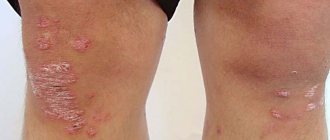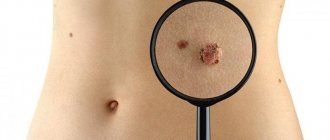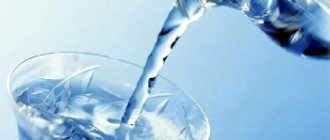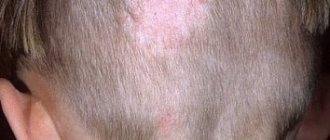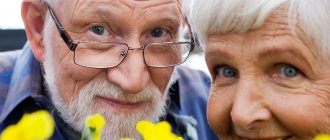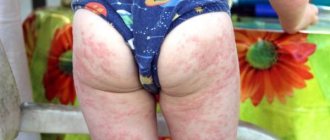Statistics indicate a colossal percentage of patients with psoriasis throughout the Earth - within 3-5%. The disease primarily affects the skin, which manifests itself as red rashes with a characteristic inflammatory reaction. At the same time, the plaque is covered with silvery scales on top. The main difficulty in treating the disease is the lack of drugs for a complete cure. It is assumed that the main factors influencing the spread of psoriasis are: metabolic abnormalities, external factors, stress, and heredity. Most scientists agree that heredity plays one of the most important roles. In the presence of genetic abnormalities, any external stimulation can trigger the process of psoriasis. These may be nervous, depressive, psycho-emotional disorders, poor-quality clothing material, mechanical damage to the skin, poisoning with chemical compounds, infectious diseases, etc. Methods of treating psoriasis are reduced to the transition of the disease from acute symptoms to asymptomatic manifestations. Of greatest importance is not only the behavior of a person during a relapse, but also the prevention of psoriasis, for which prevention is responsible.
Basic methods for preventing psoriasis
Prevention of psoriasis consists of maintaining a healthy lifestyle and eliminating negative factors. At the same time, prevention has a fairly general form, that is, it allows you to prevent the development of other diseases, since the immune system is strengthened, and the body functions normally, the likelihood of qualitatively resisting environmental irritants increases. Prevention is a set of measures aimed at maintaining health in the body. There are several areas of influence that help prevent relapses: 1. High-quality skin care; 2. Stick to a diet; 3. It is recommended to have a relaxing massage; 4. Giving up bad habits; 5. Avoid stress and depression; 6. Prevent contact of caustic chemicals with skin and respiratory tract; 7. Maintain proper levels of microelements and vitamins in the body.
Symptoms of psoriasis
The clinical picture of psoriasis largely depends on the type and stage of the disease. This or that type of disease is determined by the location of the lesion and the type of rash. Currently, the following types of psoriasis are distinguished: [1]
- Ordinary or vulgar. It appears as dense, flat, pinkish rashes that rise above the skin level and are covered with loose scales. The scales fall off easily, and if they are removed, you can see a reddish surface with small pinpoint bruises. The rashes gradually merge into plaques of various shapes and sizes.
- Exudative. It is characterized by rashes covered with yellow lamellar crusts, which also contain scales. When the scales are removed, the surface of the lesion begins to get wet and bleed.
- Seborrheic. It appears mainly on the scalp, as well as on the nasolabial and behind-the-ear folds, between the shoulder blades, and on the chest. The rash is often accompanied by dandruff, in some cases spreading to the forehead.
- Palmoplantar. It is a rash with very dense scales. It is most often diagnosed in people whose profession involves heavy physical labor.
- Pustular. One of the severe forms of psoriasis, which is accompanied by an increase in body temperature. The rash appears as small, red, scaly blisters that most often appear on the palms of the hands and soles of the feet. Patients also complain of pain and burning in the affected areas.
- Arthropathic. In addition to skin rashes, the disease also manifests itself as joint pain, stiffness and swelling. With multiple episodes of exacerbations, the disease can deform the joints, and with further progression, even lead to disability.
- Psoriatic erythroderma. A disease with very rapid development and acute manifestation. Symptoms include severe redness and swelling, many scales merging into plaques. Patients may develop a fever and possibly experience joint pain. [1]
Sometimes psoriasis can affect the nails, deform them and change color. The affected nails may develop grooves and thickenings, they become brittle, and in some cases there is even discharge from under the nails.
There are three stages of psoriasis:
- Progressive - the appearance of new elements of the rash, an increase in vesicles and nodules, their fusion into plaques.
- Stationary – manifestations stabilize and stop.
- Regressive - gradual disappearance of the rash, delayed peeling, appearance of colorless spots at the site of the rash. [1, 7]
Skin care
High-quality and thorough skin care is necessary: 1. Periodically carry out water procedures, even during the cold season. For hot times, you can use a cool shower, douches, and during the cold season, use warm baths with the addition of soda, salt, herbs, etc.; 2. It is important to carefully care for the skin so as not to provoke irritation and cuts on it. Use soft sponges, but it is better to avoid hard ones altogether, otherwise a relapse is possible; 3. Eliminate hard soaps from use. Also prevent the ingress of solvents, such as gasoline, kerosene; 4. It is better to wash your hair with special shampoos that inhibit the spread of the disease and can act as a treatment for psoriasis. This includes shampoos, conditioners, and lotions; 5. Prevent skin cracking to eliminate the possibility of symptoms. After taking a bath or shower, it is important to moisturize the skin, use masks, creams, ointments, etc. for this. This accelerates the restoration of the hydrolipid membrane and prevents increased water loss. It is necessary to use such products once a day; 6. The humidity in the room should be at the optimal level (50-55%). If the air is too dry, the skin begins to dry out and eventually crack. Humidifiers can be used; 7. Increased air circulation increases dry skin, this applies to air conditioners and drafts. It is necessary to limit the time spent in such premises; 8. Mechanical damage should be excluded. Cuts, bruises, abrasions, and tears in the skin often provoke a relapse; 9. Chemical products, for example, for bathroom cleaning, should be used minimally and only with personal protective equipment, although even prolonged exposure to the respiratory tract is harmful; 10. Trim nails short to prevent accidental injury to the skin; 11. Some types of cosmetics contain aggressive substances, which negatively affect the skin. You may have to switch to medical cosmetics.
Recipes with an adaptogenic effect on the body
Adaptogenic - an action that increases the body's resistance to a harmful external environment.
- Eleutherococcus senticosus extract. Take 20-30 drops 3 times a day, half an hour before meals. The course is a month.
- Tincture of high aralia. Take 30-40 drops 3 times a day, half an hour before meals.
The course is a month. Aralia high - Tincture of Schisandra chinensis fruits. Take 20-30 drops 2-3 times a day, before meals.
- Tincture of high quality lure. Take 30-40 drops 2-3 times a day, before meals.
- Rhodiola rosea root extract. Take 10-30 drops 2-3 times a day, half an hour before meals.
- Greater celandine decoction. In a ratio of 1:20, take 1 tbsp. 3 times a day.
- Tincture of sea buckthorn. Take 30 drops 3 times a day.
- Tincture of common barley seeds (50%). Take 30 drops 3 times a day.
- Infusion of chaga (birch mushroom). Pour the dried mushroom with cold boiled water for 4 hours, then grind it in a mortar. Fill with the same water in a ratio of 1:5, leave for 2 days. Drain the liquid and squeeze out the sediment. Take a glass a day, half an hour before meals.
- The drug "Befungin". The drug also contains birch mushroom extract (chaga).
Dilute 2 tsp. drug in 150 ml. boiled water, take 1 tbsp. l. 3 times a day, half an hour before meals. The course is 3-5 months, with a break of 7-10 days. Befungin
The use of healing massage
Prevention of psoriasis becomes even more effective if you use massage. Massage techniques that stimulate blood circulation are considered especially useful. Thanks to active blood circulation, the removal of metabolites and toxins is accelerated, and the process of skin regeneration is accelerated, which prevents exacerbation of the disease. The massage involves using your fingers to gradually stretch the areas of skin located around the plaques. You need to cover an area of 2-4 cm around the affected area. You shouldn’t touch the plaques themselves, as this can worsen the disease. To prevent the appearance of new plaques, you can massage the whole body. Mostly you need to treat the back, then move on to massaging the limbs and finally the abdomen. The chest responds well to squeezing and rubbing. The duration of the procedure is 10-15 minutes.
Home solarium
Many people have heard about the effectiveness of home tanning beds in the treatment of psoriasis. However, dermatologists are not so clear in their judgments. For many patients, ultraviolet light actually has a beneficial effect. As a result of sunbathing, plaques disappear, itching and flaking decrease. But completely different consequences of sunbathing are possible. As a result of radiation, the disease worsens and new plaques appear. Therefore, before starting sunbathing, patients should definitely consult with their dermatologist.
In addition, a solarium is not recommended when treating psoriasis with ointments, solutions and lotions. Such substances increase skin sensitivity to ultraviolet radiation.
Proper nutrition and diet
Nutrition plays a vital role in preventing the development of almost all chronic diseases, psoriasis and its prevention is no exception. There are some diet plans that can produce positive results, such as the Pegano diet, but the essence is the same and involves eliminating harmful substances. It is because of the negative impact of food that relapses occur. This is justified by the fact that liver damage in psoriasis is a characteristic course of the disease. 1. Avoid fried, spicy, salty and pickled foods at all. Also exclude canned food; semi-finished products can be consumed in small quantities, but only homemade. Eat perishable foods with caution. All this worsens the process of food processing in the gastrointestinal tract; 2. You cannot eat citrus fruits, as they are considered highly allergenic fruits. Citrus fruits also contain colchicine, which destroys folic acid, which in turn is one of the important components of skin regeneration; 3. It is not recommended to eat corn; 4. Relapses are possible due to bananas, mangoes and strawberries; 5. It is forbidden to eat sweets, as well as flour products; 6. Eating potatoes is acceptable, but the quantity should be greatly reduced. This is due to the high potassium content. By reacting with sodium, they have an antagonistic effect on calcium. Calcium is important for eliminating the inflammatory response; 7. Fatty meats should be minimized; these primarily include pork and lamb. Replace with more dietary varieties of meat; 8. Highly allergenic foods are considered: eggs, tomatoes, coffee, chocolate, honey, and mushrooms; 9. Dairy products are healthy because they contain a lot of protein and fat. It is recommended to include cottage cheese, milk, fermented baked milk and cheese in the diet. Thanks to the most important amino acids, the course of biochemical reactions throughout the body is normalized. At the same time, the high calcium content helps eliminate inflammation, as well as allergic manifestations; 10. Treatment and prevention of psoriasis responds well to eating foods of plant origin, such as vegetables, fruits and herbs. However, they should be eaten raw. Carrots have beneficial properties thanks to vitamin A. This component leads to the normalization of metabolism in the skin and helps to perform faster regeneration; 11. The diet should include porridge every day. The most useful cereals are: wheat, oatmeal and buckwheat; 12. For the fastest treatment of psoriasis, you need to drink a lot of fluids, this includes juices, water, including mineral water, teas, etc.; 13. If you have intolerance, prevent the consumption of allergens. This nuance is determined with the help of the attending physician.
Reasons for the development of psoriasis
One of the most common causes of psoriasis is considered to be a genetic factor associated with sensitization of the immune system and pathologies of keratinocytes (cells of the stratum corneum of the epidermis). Researchers have proven the multifactorial nature of the disease with predominantly genetic determination, with the share of the genetic component being 60-70%, and the environmental component – 30-40%. [4] Unfortunately, scientists have not yet established which genes control the immune system failures that occur in psoriasis. The mechanism of the pathological process is as follows: the immune system gives the wrong signals, so the body, instead of getting rid of the affected skin cells, begins to accumulate them on the surface, forming plaques characteristic of psoriatic lesions.
Also common theories as to what causes psoriasis and exacerbations (more often in the cold season) are:
- viral;
- neurogenic;
- exchange;
- theory of congenital defects of skin capillaries.
Some scientists believe that, in addition to keratinocytes, T-lymphocytes and blood vessels are involved in the pathological process. This leads to the formation of inflammatory foci in the form of various rashes. [3]
Among the reasons for the development of total skin lesions in psoriasis, as well as their exacerbations, the following are considered:
- concomitant viral or bacterial infections;
- alcohol abuse;
- active smoking;
- mechanical damage;
- use of certain medications;
- emotional stress. [5, 6]
Quitting alcohol and smoking
There is no reliable data on whether alcohol can provoke the disease. However, it is known for sure that in patients with already developed psoriasis, the course of the disease is greatly aggravated by drinking alcohol. It is also possible to generalize the usual, vulgar form of the disease into a more severe one, for example, psoriatic erythroderma. Regarding smoking, everything is somewhat simpler. It has been noted that it can provoke both the disease itself and aggravate the current form of the disease. People who consume 20 or more cigarettes per day are especially at risk. The main problem is a decrease in the activity of the immune system due to oxygen deficiency and weakening of muscle tone and vascular walls. It is also important that smoking worsens blood circulation through the capillaries, as well as suppression of antioxidant protection.
Losterine in the treatment of psoriasis on the legs
The line of non-hormonal products Losterin is specially created for the complex treatment of chronic skin diseases and the care of damaged skin. The drugs are suitable for daily long-term use. Active ingredients: deresined naphthalan, urea (urea), salicylic acid, D-panthenol, Japanese Sophora extract and almond oil do not cause addiction and “withdrawal syndrome”.
Carefully selected ingredients act directly on the affected areas, reducing inflammation and itching. For the purpose of complex treatment and preventive measures for exacerbation of psoriasis on the legs and feet, the following are used: foot cream, thick emulsion and Losterin shower gel. The drugs can be used during remission and as part of combination therapy.
Treatment can be supplemented with physiotherapy. The greatest therapeutic effect is observed from phototherapy (PUVA therapy. UVB-311 nm). This method significantly reduces inflammation within the lesion, reduces the need for medications and prevents relapse of the disease.
Sanatorium-resort treatment with hydrogen sulfide and sulfur sources during the period of regression and stationary form. The selection of an effective remedy for psoriasis on the legs is carried out by the treating specialist; the complex effect on the body is important.
Healthy lifestyle
A healthy lifestyle is one of the fundamental factors that influence the well-being of the skin. It is important to have a good daily routine, including getting enough sleep. Doctors advise getting out into nature more often, getting fresh air, going to the sea, resorts, and sanatoriums. Physical activity allows you to restore a healthy state of the body, which is the main factor in preventing disease. Sports activities are excellent, especially fitness and swimming. This set of measures allows you to strengthen the immune system, as well as eliminate nervous tension.
Pills
In rare cases, during an exacerbation of psoriasis, the doctor may prescribe a variety of tablets. If the cause of the disease is excessive anxiety, depression and stress, it is possible to take sedatives, for example, motherwort and valerian.
To eliminate inflammation and reduce itching of the skin, patients may also be prescribed antihistamines. And to cleanse the body of toxins, normalize metabolic processes and prevent subsequent relapses of the disease - medications to maintain the gastrointestinal tract. Often an exacerbation occurs against the background of a weakened immune system, so therapy against psoriasis includes the mandatory intake of folic acid, which helps regenerate damaged skin.
Antistress
Psycho-emotional disorders and tension negatively affect the course of the disease and very often provoke its occurrence. Of primary importance in prevention is the normalization and stability of the emotional state and nervous system. You should try to eliminate external irritants as much as possible. Ancient practices like yoga and meditation, as well as extra sleep, can help with this. In more severe situations, they use sedatives or use herbal teas. If psoriasis involves disorders of the nervous system - headaches, sleep disturbances, nervousness, then the use of medications is possible. Effective - motherwort, valerian, Nervo-Vit. They allow you to normalize your sleep patterns, increase your immune system, and improve your resistance to stress. It’s difficult to achieve results without making your own efforts; you need to take everything more calmly.
Treatment of psoriasis on the legs
Before deciding how to treat psoriasis on the legs, it is important to rule out other skin diseases, such as a fungal infection. For this purpose, a skin scraping is most often taken for laboratory testing.
Treatment of psoriasis on the legs involves the use of medications for external and internal use, physiotherapy, adherence to the rules of personal hygiene, diet, sleep and rest.
For severe psoriasis on the legs, systemic anti-inflammatory (immunosuppressive and cytostatic) drugs or agents that affect the rate of cell division (synthetic retinoids) are used. Additionally or in milder cases, vitamin therapy and hepatoprotectors may be prescribed.
External treatment for psoriasis on the legs includes the use of medications (most often hormonal drugs are used in combination with salicylic acid or a vitamin D analogue) and care products based on salicylic acid, urea, tar, naphthalan oil.
Use of vitamin complexes
Vitamins have an extremely beneficial effect not only on the course of the disease, but also on its prevention. Thanks to a strong immune system, it is possible to prevent relapse; at the same time, metabolism improves, which has a beneficial effect on the condition of the skin. Important vitamins are: 1. A – it is responsible for keratinization, which significantly accelerates skin regeneration; 2. E – mainly valued for its antioxidant effects. It also prevents deviations in metabolism and acts as an integral part of DNA synthesis; 3. D – is a regulating substance for the exchange of phosphorus and calcium. At the same time, it stimulates regeneration in the epidermis and normalizes the membrane and cellular structure; 4. Group B – actively participate in skin metabolism, improve the process of oxygen absorption. The skin elements respond favorably to the presence of B vitamins, which is reflected by the normalization of the nervous system. Most often, foods high in vitamins or medications are used. Recommended are Undevit, Hexavit, and Decamevit, but they should be used based on the doctor’s recommendations.
Traditional methods for normalizing the functioning of the adrenal glands
The adrenal glands are involved in metabolism and help the body adapt to unfavorable environmental factors. With psoriasis, their function is impaired and the necessary hormones are no longer produced.
- Infusion of black elderberry flowers. Take 2 teaspoons of the plant and pour boiling water over it.
Take 2 tbsp. l. 5-6 times a day. Black elderberry - Infusion of herb trifidum. Ratio 1:20, take 1 tbsp. l. 3 times a day.
- Black currant infusion (5%). Take 300-500 ml per day.
- Infusion of three-leaf watch. Take 2 tsp. leaves, pour a glass of boiling water. Take a quarter glass 2-3 times a day, half an hour before meals.
Climatotherapy, ultraviolet rays
Ultraviolet irradiation has a beneficial effect on the course of psoriasis and its prevention. Patients are prescribed sunbathing for 5-10 minutes; combustion is unacceptable. Sea water also has a positive effect, especially from the Dead Sea, although this indicator is individual, but on the contrary, it is harmful for some. Skin wounds are a contraindication to swimming in sea water. During an exacerbation, you should not swim. The time for climatotherapy should be adjusted individually. When sunbathing, you need to use protective creams. Your doctor will be able to tell you whether sunbathing will have a beneficial effect, otherwise there is a high risk of exacerbation of the disease.
Who is susceptible to this disease?
A disease such as skin psoriasis affects approximately 3-5% of the population in different countries. Men and women - equally. Psoriasis can develop at any age, but, as a rule, the disease first appears around the age of 20, often earlier in women than in men. However, the Medical On Group corporation has collected impressive statistics on the treatment of children and elderly people suffering from this disease.
In addition to heredity, psoriasis has the following causes:
- excessively active division of skin cells;
- stress;
- decreased immunity after illness.
Cloth
Such a factor as high-quality and suitable clothing is one of the principles of preventing psoriasis or its relapse. It is recommended to use soft fabric clothing made from natural materials, preferably in a light color. This will avoid injury to the plaques and reduce pain on the skin. A light color will help make silver scales less noticeable. Linen, cotton and other soft fabrics are optimal for bed linen. You should avoid wearing woolen sweaters and similar irritating materials.
Photo of psoriasis on the legs, what psoriasis looks like on the legs
Photo 1. Psoriasis of the feet.
Photo 2. Psoriasis on the legs.
Photo 3. Symptoms of psoriasis: itching.
Photo 4. Symptoms of psoriasis: deterioration of nails.
Photo 5. Psoriasis on the heels.
Photo 6. Cracks on the heels from psoriasis.
To see what psoriasis looks like on the legs, you can look at photos of rashes on medical websites. Detailed photos of psoriasis on the feet will allow you to examine the shape, appearance and structural features of the psoriatic plaque.
Forms of palmar-plantar psoriasis
The horny form of palmoplantar psoriasis is characterized by the appearance of round plaques. The skin takes on a yellow tint, and the lesions become more dense. Small papules and large plaques appear on the surface.
The pustular form of the disease is characterized by:
- pustules that do not contain pus;
- skin redness;
- severe itching in the area of pustular rashes;
- fusion of several nearby pustules;
- symmetrical arrangement of rashes;
- frequent relapses and rapid development.
Symptoms of a typical form of psoriasis are:
- flat papules that rise above the surface of the skin;
- the presence of papules and plaques covered with silvery scales;
- dense arrangement of scales on the surface of the skin;
- frequent manifestation of plaques on the extensor surfaces of the hands and feet.
Stages of palmoplantar psoriasis
The skin on the feet and palms is much thicker than on other parts of the body, which is why this type of psoriasis progresses differently than other forms of the disease.
- At the first stage, small yellow pimples appear, visually similar to ulcers, and severe itching.
- At the next stage, these formations become red and crusty. Soreness appears.
- The later stages are characterized by the presence of large plaques connected to each other. The skin around the damaged area becomes rough and dry.
